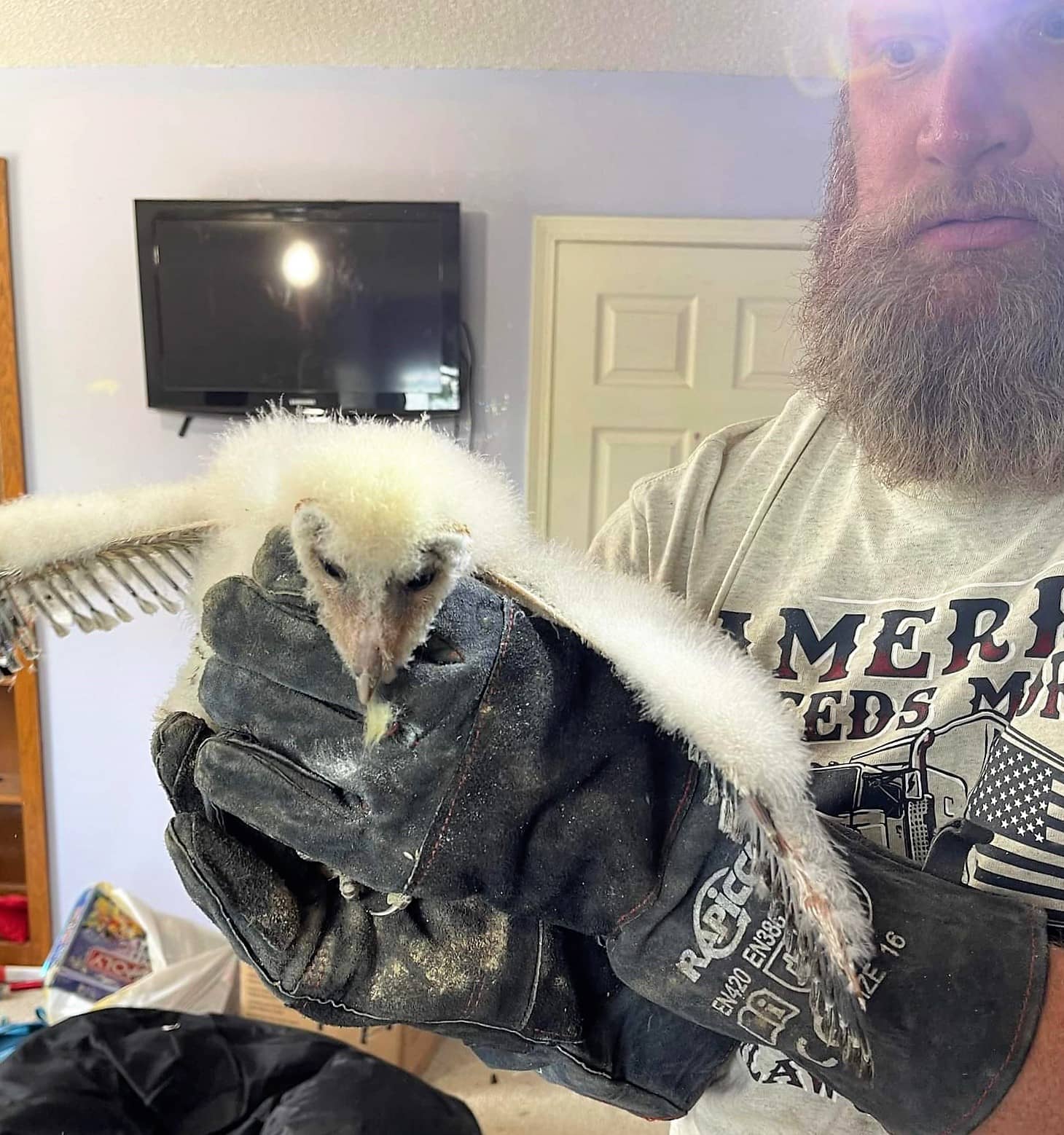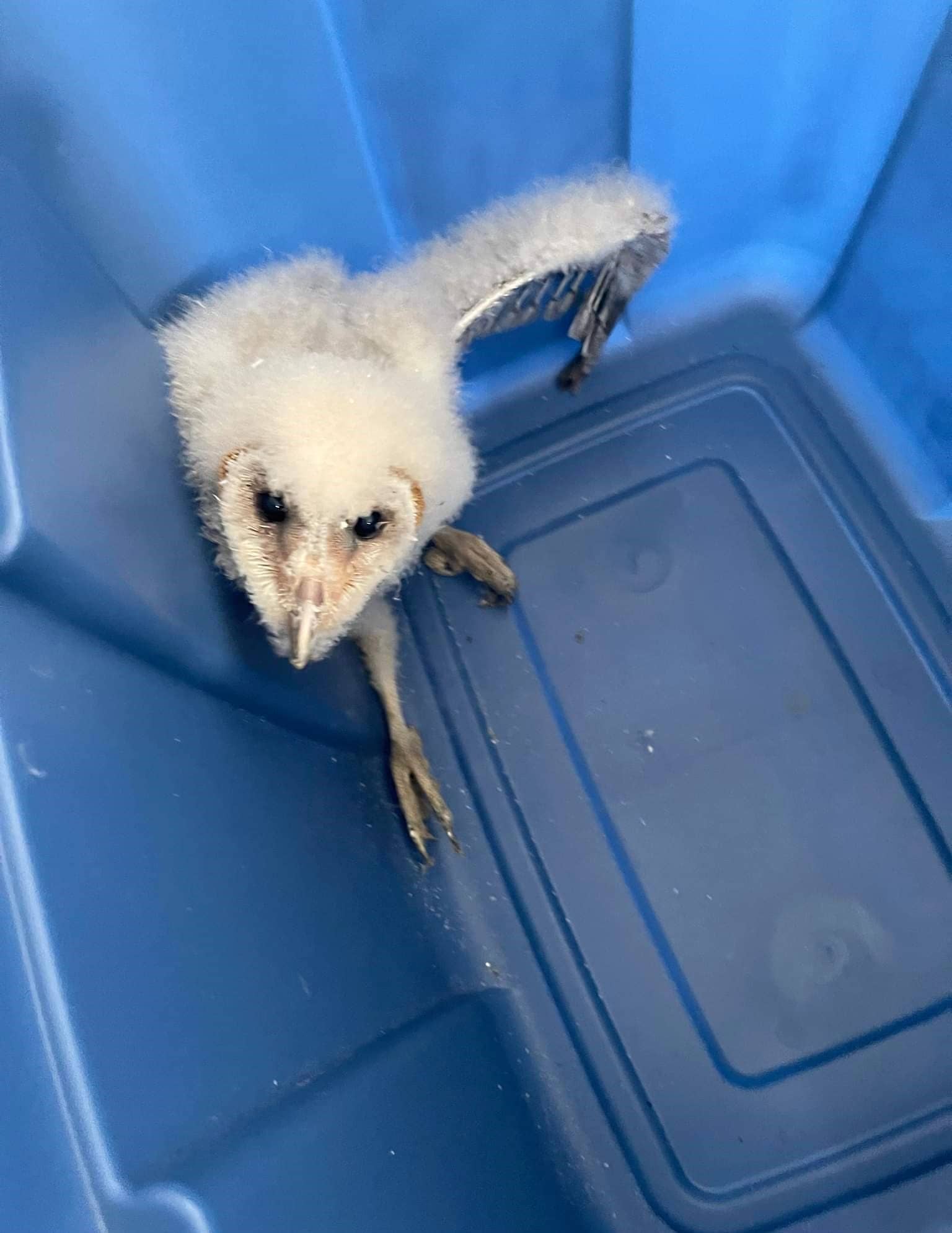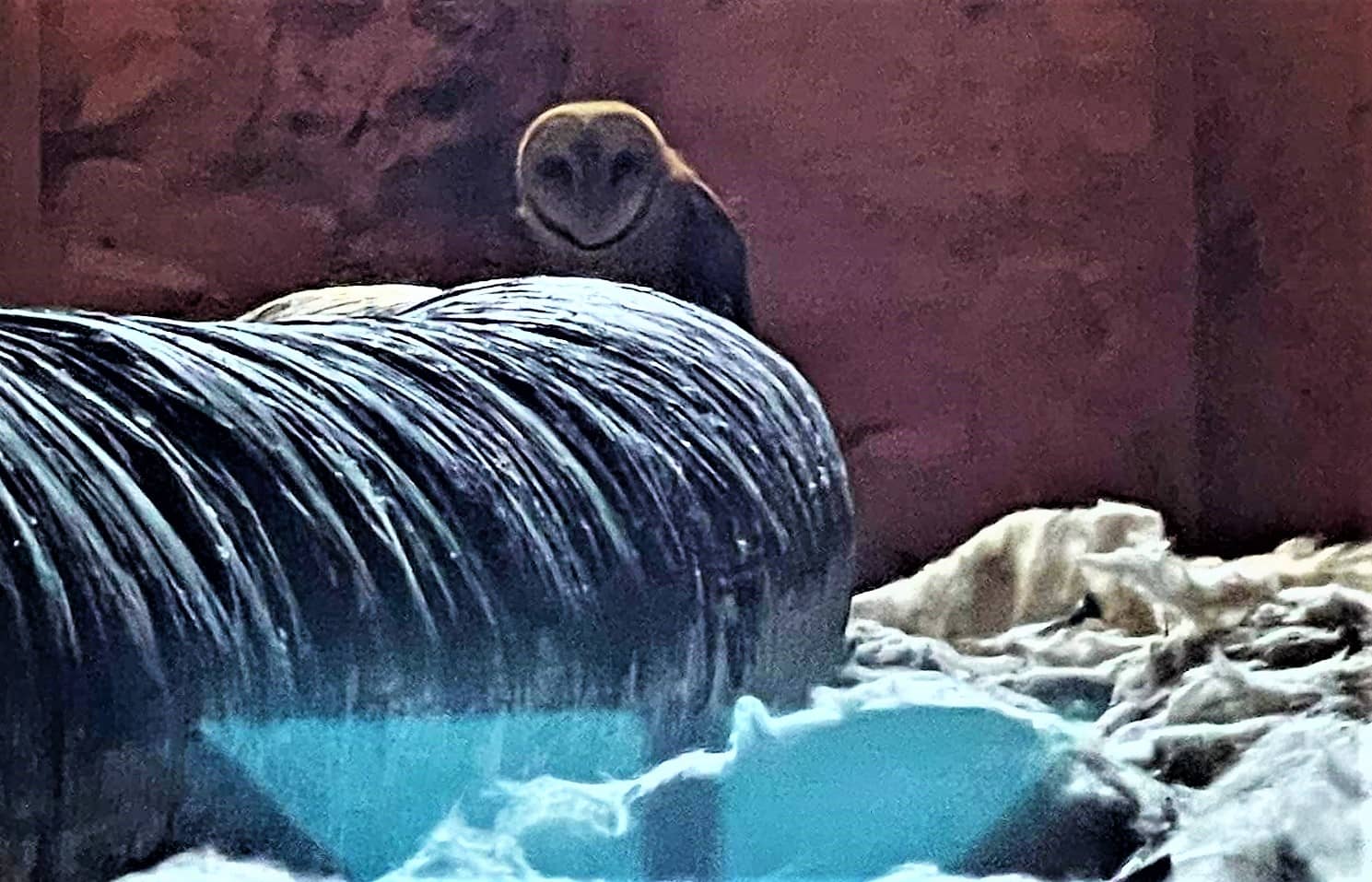
For local homeowners, it’s easy to dismiss property pests like raccoons, snakes, bees and hornets, stray dogs, cats and the armored armadillo — many of which can be taken care of with a phone call to county animal control, or a simple deterrent.
But what happens when a special, non-invasive species gets inside the walls?
Ask David Beaudry. As a trained and licensed nuisance wildlife control operator through the Kentucky Department of Fish and Wildlife, he might have the answer.
Two months ago, he and his wife received a call from a property owner near Delmont Church Road in southern Trigg County.
She had an owl in the attic, and didn’t know what to do.
And it was more than just one owl. Beaudry said he didn’t know the sex of the adult, but with it came five owlets, and the other parent likely out hunting and gathering for the day.

Fittingly, a barn was also on the property, and over the last few weeks he’s checked on the family’s progress — only to see they’ve moved along and found better lodging.
A full-time employee for E-Tank in Cadiz, Beaudry answers these types of calls when he can, and free of charge. He said he wants to help the community through these special circumstances, which are often costly through other businesses.
He has three donkeys, four pigs and three goats on his own property, and got into nuisance animal control in part because he wanted to protect his own pets. He’s also done some commercial trapping work for the Walmart Distribution Center, but added that he’s more interested in assisting folks at the micro-level.
And to become a nuisance wildlife control operator isn’t easy. Beaudry said he acquired his license in 2021, where in post-COVID world he was given materials by the Kentucky Department of Fish & Wildlife and had to study for a proctored exam. Once tested out, he has to renew his license each year.
Some of that training paid off in this very scenario.
In the future, Beaudry notes he’d be extremely interested in working for animal control of Trigg County.
He can be contacted personally at (270) 350-7474, or through Facebook.

National Geographic Facts On Barn Owls:
COMMON NAME: Barn owl
SCIENTIFIC NAME: Tyto alba
TYPE: Birds
DIET: Carnivore
AVERAGE LIFE SPAN IN THE WILD: 4 years
SIZE: About a foot
WEIGHT: About a pound
— Typically prey on rats, mice, snakes, fish, insects and small mammals
— One of the most widespread bird species on Earth
— Do not migrate; typically live in lowlands, farmlands and deserts
— Often colored in tawny golds and grays, with a red or white underbelly
— Females are often spotted, and more spots means fewer parasites
— Superior night vision, and bob heads to increase depth perception; light sensitive
— Roughly 3/4 of pairs mate for life; will separate if not producing enough young
— Females will lay eggs two, three days apart so they won’t hatch at once
— Males bring brooding females food, and she’ll tear food apart for owlets
— By two weeks old, owlets can eat whole; by eight weeks, they’ll fledge; will hang around for 15 weeks






